Michael Gallagher's Blog, page 11
August 1, 2013
Why the Victorians saw ghosts: there’s no business like show business
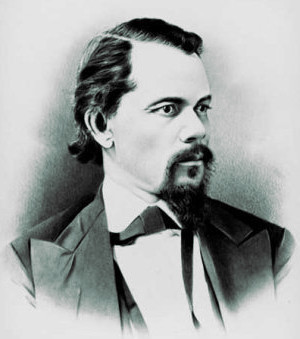 While I was researching my novel,
The Bridge of Dead Things
, I came to understand that the Victorian vogue for spiritualism did not happen in a vacuum. It grew out of a very specific culture, at a particular point in time, and it fulfilled a number of surprisingly different needs. This is the second in a series of posts that examines various influences on the development of spiritualism.
While I was researching my novel,
The Bridge of Dead Things
, I came to understand that the Victorian vogue for spiritualism did not happen in a vacuum. It grew out of a very specific culture, at a particular point in time, and it fulfilled a number of surprisingly different needs. This is the second in a series of posts that examines various influences on the development of spiritualism.Although spiritualism and séances were always to retain a strong domestic, amateur appeal, in that they remained essentially private affairs practised by middle-class enthusiasts dabbling in table-rapping and table-turning in their own homes, they were destined to became public, professional affairs as well.
The small band of pioneers from Rochester (dubbed by many as "the Rochester rappers") received spirit messages urging them to hold an open meeting where their powers could be investigated and tested. This was a risky move, for although the spirits obliged with their normal fare of raps and knocks, the men who were testing the mediums refused to believe that they were caused by any outside agency.
Horace Greeley, the founder and editor of the New York Tribune, published their report, but also appended a note suggesting that their tests were invalid because of the men’s obvious bias. Supporters rallied to the call, giving testimony about the Fox sisters’ abilities. Rather than stifling spiritualism, the report fed the public interest in the girls.
Under the watchful supervision of their mother, the three Fox sisters began giving public sittings at Barnum's Hotel in New York in the spring of 1850. There’s a contemporary description written by a Mrs Emma Hardinge, who was later to become a medium in her own right, which gives us some idea of the pressure the girls faced. She talks of "pausing on the first floor to hear poor patient Kate Fox, in the midst of a captious, grumbling crowd of investigators, repeating hour after hour the letters of the alphabet, while the no less poor, patient spirits rapped out names, ages and dates to suit all comers." Although most of the press reports denounced them as frauds, Horace Greeley published a supportive and sympathetic article in his paper. After a tour of the Western States, the Fox family paid a second visit to New York, which again attracted an intense public interest, both positive and negative.
For some years the two younger sisters, Kate and Margaret, made their living by giving séances. An extraordinary daguerreotype of Kate and Margaret exists in the Missouri History Museum, made by the daguerreotypist Thomas M. Easterly at his studio in St. Louis, Missouri when the sisters stopped off there during their national tour of 1852. Do take the opportunity to click on this link and have a look. A daguerreotype is a photographic likeness made directly onto a sheet of polished silver-plated copper; no intermediary negative is used and no prints can be made, and consequently each daguerreotype is a one-off original. I wanted to use this image to head up this post, but although the copyright on the original expired long ago, the copyright on the reproduction that you see did not.
One of the early communications that the Fox sisters received had claimed that "these manifestations would not be confined to them, but would go all over the world." Their public demonstrations were proving to be so popular that now others began to copy and improve upon their format. In an incredibly short space of time the movement swept across the Northern and Eastern States of the Union, with mediums (or "trance lecturers" as they were known) competing to produce increasingly startling phenomena. A repertoire that had started as a simple series of loud raps and knocks now included the appearance of "spirit-lights" and disembodied hands and faces, automatic writing whilst the medium was apparently in a trance, channelled spirits who spoke to or through the medium, objects that moved by themselves, and even levitation. Spiritualism had become show business.
Prominent practitioners at this point included a certain Mrs Hayden, the two Davenport brothers, and Daniel Dunglas Home (all four of whom I will discuss in greater detail in a later post), the beautiful young Cora L. V. Hatch, Achsa W. Sprague, an abolitionist and advocate of equal rights for women, and Paschal Beverly Randolph, an intriguing man of mixed race who was one of the earliest abolitionists.
Paschal Beverly Randolph was one of this new breed of mediums to rise to prominence in the early 1850s. He was eloquent and good-looking, with a commanding stage presence and a compelling personality to match. From a young age he’d been obliged to make his living as an irregular crewman aboard a number of commercial vessels. His travels had taken him to England and France, and as far east as Persia, and had introduced him to a wealth of new ideas, religions and esoteric beliefs. It was during this time that he developed an deep and abiding interest for gnosticism, freemasonry, sexual magic and the occult.
On his return to America he started writing books (he wrote over fifty of them during his lifetime), many of which were vehicles for his masonic beliefs. Two of these have been lovingly recreated as e-books and are available as free downloads from the wonderful Gutenberg Project (though I warn you now, they are both written in the heavily veiled allegorical style that is typical of most masonic texts). As well as writing, Randolph set up his own publishing house and trained as a doctor. He also established the first Rosicrucian organisation in America, the Fraternitas Rosae Crucis (the Fraternity of the Rosy Cross). All through this period he worked as a trance lecturer, using his stage appearances to argue the case for the abolition of slavery.
As admirable as as all this may be (though it does go some way to demonstrate the strong bond between spiritualism and radical reform), the real reason for his inclusion here is that he provides an interesting link to next month’s post. It is claimed that in 1851, at the age of 25, Paschal Beverly Randolph made the acquaintance of Abraham Lincoln and struck up a friendship that lasted until Lincoln’s untimely death. Despite the fact that Lincoln’s second son, Eddie, had died the previous year from tuberculosis, it’s far more likely that the medium offered the great man his views on abolition, and not some form of spiritualist communion with his dead child. But, as we will see next time, Randolph was not the only medium to make Lincoln’s acquaintance.
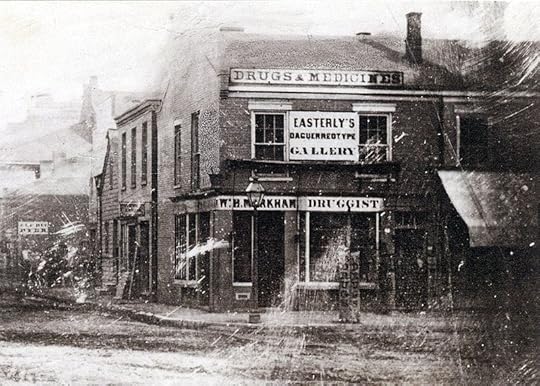
Next month: a séance in the White House
Find out more at
michaelgallagherwrites.com
Images:
Paschal Beverly Randolph (1825-1875)
Thomas M. Easterly’s Daguerreotype Gallery, St. Louis
Photographer unidentified, but presumably Thomas M. Easterly himself (1809-1882), 1851
Published on August 01, 2013 04:04
•
Tags:
fox-sisters, horace-greeley, kate-fox, margaret-fox, mediums, new-york-times, paschal-beverly-randolph, rochester, seances, spiritualism, spiritualists, victorian-mediums, victorian-seances
June 30, 2013
Why the Victorians saw ghosts: an early April Fool?
 While I was researching my novel,
The Bridge of Dead Things
, I came to understand that the Victorian vogue for spiritualism did not happen in a vacuum. It grew out of a very specific culture, at a particular point in time, and it fulfilled a number of surprisingly different needs. This is the first in a series of posts that examines various influences on the development of spiritualism.
While I was researching my novel,
The Bridge of Dead Things
, I came to understand that the Victorian vogue for spiritualism did not happen in a vacuum. It grew out of a very specific culture, at a particular point in time, and it fulfilled a number of surprisingly different needs. This is the first in a series of posts that examines various influences on the development of spiritualism.The story of spiritualism starts with a house that had an uncanny reputation in Hydesville, New York, a hamlet which no longer exists but was then situated in Wayne County in New York State. John Fox, a farmer, took over the tenancy with his wife Margaret and two of his children, Margaret and Kate on December 11th, 1847. Three months of relative peace went by, then at the tail end of March, when his daughters were aged fourteen and eleven respectively, the knocking began. Noises were heard all through the house. John and his wife investigated, but could find no explanation for the sounds.
On Friday the 31st of March the family retired early for the night, with the girls sleeping in the same room as their parents, when the commotion began again. Kate, the youngest challenged the noise-maker, saying, "Mr. Splitfoot, do as I do," whilst clapping her hands. The sound instantly followed her with the same number of raps.
According to Mrs Fox’s own testimony, “…[Kate] said in her childish simplicity, "Oh, mother, I know what it is. To-morrow is April-fool day, and it's somebody trying to fool us." I then thought I could put a test that no one in the place could answer. I asked the noise to rap my different children's ages, successively. Instantly, each one of my children's ages was given correctly, pausing between them sufficiently long to individualize them until the seventh, at which a longer pause was made, and then three more emphatic raps were given, corresponding to the age of the little one that died, which was my youngest child. I then asked: "Is this a human being that answers my questions so correctly?" There was no rap. I asked: "Is it a spirit? If it is, make two raps." Two sounds were given as soon as the request was made. I then said "If it was an injured spirit, make two raps," which were instantly made, causing the house to tremble. I asked: "Were you injured in this house?" The answer was given as before. "Is the person living that injured you?" Answered by raps in the same manner. I ascertained by the same method that it was a man, aged thirty-one years, that he had been murdered in this house, and his remains were buried in the cellar; that his family consisted of a wife and five children, two sons and three daughters, all living at the time of his death, but that his wife had since died. I asked: "Will you continue to rap if I call my neighbours that they may hear it too?" The raps were loud in the affirmative.”
Mr Fox called in a neighbour, a no-nonsense woman named Mrs Redfield. After the spirit had answered her questions she called for her husband, who then called in all the other neighbours, one of whom, Mr Duesler, managed to ascertain that the man was murdered in the east bedroom about five years ago; that the murder was committed on a Tuesday night at twelve o'clock; that he was murdered by having his throat cut with a butcher knife; that he was murdered for money; that the body was taken down to the cellar; that it was not buried until the next night; that it was taken through the buttery, down the stairway, and that it was now buried ten feet below the surface of the ground.
By the next day (April 1st) the house was full to overflowing with people curious to experience the now celebrated phenomena for themselves. In the evening they dug up the cellar until they came to water, and then they gave up. The knocking continued intermittently over the next few days. Within a week Mrs Fox’s hair had turned white from the anxiety.
Fourteen-year-old Margaret was sent to stay with her older brother David in the nearby town of Rochester; Kate also went to Rochester to stay with her older sister Leah, a music teacher whose married name was Fish. Unfortunately the rapping knocks went too. Hundreds flocked to Mrs Fish’s house to witness and marvel.
The knocking became contagious. It was no longer confined to the Fox family. Similar sounds were heard in the homes of the Reverend A. H. Jervis, a Methodist minister from Rochester, and a Mrs Sarah A. Tamlin, a Mrs Benedict, and a certain Deacon Hale, who lived in surrounding towns. Now the knocks claimed that they came from the deceased friends of those who were gathered there. The amateur séance was born.
These early enthusiasts were often reformers who championed the abolition of slavery, equal rights for women, and the temperance movement. Their involvement with spiritualism reflects a link between spiritualists and radical reformers, especially those who advocated women's rights, that would last for more than half a century.
At this point séances were essentially domestic affairs held in private homes. Soon, however, they would become much, much more.
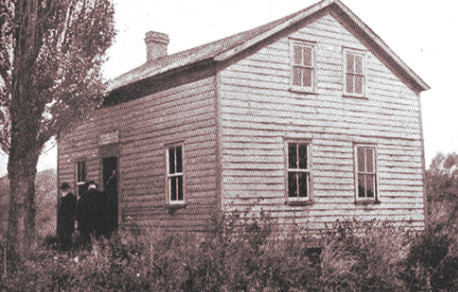
Next month: there’s no business like show business
Find out more at
michaelgallagherwrites.com
Images:
The Fox sisters; Kate and Margaret Fox with their married sister, Mrs Leah Fish
Photographer and date unknown
The Foxes’ House, Hydesville, New York
Photographer and date unknown
Published on June 30, 2013 06:30
•
Tags:
fox-sisters, kate-fox, margaret-fox, mediums, seances, spiritualism, spiritualists, victorian-mediums, victorian-seances
June 8, 2013
The rise and fall of Victorian medium Florence Cook: life after Katie
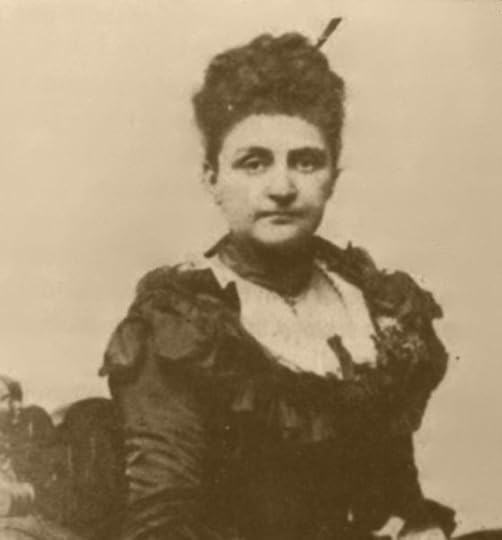 Although
The Bridge of Dead Things
is clearly a work of fiction, it was suggested in part by the true tale of the respected Victorian scientist Sir William Crookes and his spirit-materialising protégée Florence Cook. This is the fourth and final post relating her story.
Although
The Bridge of Dead Things
is clearly a work of fiction, it was suggested in part by the true tale of the respected Victorian scientist Sir William Crookes and his spirit-materialising protégée Florence Cook. This is the fourth and final post relating her story.Though Katie was never to appear again, Florence went on to host two further spirit-guides during her lifetime: firstly Leila in 1875 (the same year that Frank Herne, the medium who’d set Florence on her career-path was debunked as a fraud), and then later a French girl who called herself Marie, who was said to have “danced and sung in a truly professional style”.
In 1880 Florence Cook was ghost-grabbed for a second time, on this occasion by the young Sir George Sitwell, a 20-year-old Oxford University student, at a public séance being given at the rooms of the National British Association of Spiritualists. The debacle ruined her, and she retired and moved to Wales. The incident brought Sir George some noteriety too and he soon left Oxford without taking a degree. He ended up fathering a daughter, the future Dame Edith Sitwell, truly England’s most eccentric poet who became something of an entertainer herself. In 1923 she alienated her audience by standing out of sight behind a starkly-painted screen while shouting her poems at them through a megaphone, all in time to William Walton’s carefully arranged score of Façade – An Entertainment.
In 1899 Florence tried to revive her career when she was invited to Berlin to undertake a series of séances under test conditions by the Sphinx Society. She died of pneumonia in relative poverty at 20 Battersea Rise, London, on the 22nd of April 1904 at the age of 48. Her husband outlived her by a quarter of a century and died in 1928.
William Crookes received his knighthood in 1897 and the Order of Merit in 1910. He died in 1919. Towards the end of his life he sought out mediums to help him communicate with his beloved wife, who had predeceased him by two years.
I’d like the last words to go to the fifteen-year-old Florence Cook herself. In a letter to Mr W. H. Harrison (the Telegraph reporter who would later take the first photographs of Katie), dated May, 1872, she writes: “From my childhood I could see spirits and hear voices, and was addicted to sitting by myself talking to what I declared to be living people. As no one else could see or hear anything, my parents tried to make me believe it was all imagination, but I would not alter my belief…”
Find out more at michaelgallagherwrites.com
Published on June 08, 2013 06:17
•
Tags:
mediums, seance, spiritualism, victorian-mediums, victorian-seances
May 24, 2013
The rise and fall of Victorian medium Florence Cook: Katie’s final farewell
 Although
The Bridge of Dead Things
is clearly a work of fiction, it was suggested in part by the true tale of the respected Victorian scientist Sir William Crookes and his spirit-materialising protégée Florence Cook. This is the third of four posts relating her life story.
Although
The Bridge of Dead Things
is clearly a work of fiction, it was suggested in part by the true tale of the respected Victorian scientist Sir William Crookes and his spirit-materialising protégée Florence Cook. This is the third of four posts relating her life story.The séances continued. Florence teamed up with another girl, Mary Rosina Showers. The pair gave a séance at the Crookes home in March of 1874 which was attended by a number of witnesses, among them the barrister, Sergeant-at-law Edward William Cox. Cox was a firm believer in spiritualism; it was he who had first hosted and championed the Scottish-born medium Daniel Dunglas Home on his return from America. He published his observations some weeks later in The Spiritualist, the leading newspaper in its field. Of the materialisations he wrote: “They were solid flesh and blood and bone. They breathed, and perspired, and ate…Not merely did they resemble their respective mediums, they were…alike in face, hair, complexion, teeth, eyes, hands, and movements of the body…”
As regards proof that they were not simply the two girls themselves, he wrote: “…no proof whatever was given or offered or permitted. The fact might have been established in a moment beyond all doubt by the simple process of opening the curtain and exhibiting the two ladies then and there upon the sofa, wearing their black gowns. But this only certain evidence was not proffered, nor, indeed, was it allowed us…”
On the 29th of April 1874 Florence Cook married Captain Edward Elgie Corner, the neighbour who had rushed to Katie’s aid the previous December. Though their marriage was blessed with two daughters, Kate and Edith, it was not a happy one.
The final appearance of Katie King was a truly sad occasion. She had often stated that she could not appear on this earth beyond the month of May, 1874, and so, on the 21st, she assembled her friends together to bid them all goodbye. This eye-witness account was written by the stage actress and internationally successful author Florence Marryat:
“Katie had asked Miss Cook to provide her with a large basket of flowers and ribbons, and she sat on the floor and made up a bouquet for each of her friends to keep in remembrance of her. Mine, which consists of lilies of the valley and pink geranium, looks almost as fresh to-day, nearly seventeen years after, as it did when she gave it to me. It was accompanied by the following words, which Katie wrote on a sheet of paper in my presence: ‘From Annie Owen de Morgan (alias “Katie”) to her friend Florence Marryat Ross-Church. With love. Pensez à Moi. May 21st 1874.’ The farewell scene was as pathetic as if we had been parting with a dear companion by death. Katie herself did not seem to know how to go. She returned again and again to have a last look, especially at Mr. Alfred [William] Crookes, who was as attached to her as she was to him.”
Of that final parting, this is what William Crookes himself wrote: “Having concluded her directions, Katie invited me into the cabinet with her, and allowed me to remain there to the end. After closing the curtain she conversed with me for some time, and then walked across the room to where Miss Cook was lying senseless on the floor. Stooping over her, Katie touched her and said, ‘Wake up, Florrie, wake up! I must leave you now.’ Miss Cook then woke and tearfully entreated Katie to stay a little time longer. ‘My dear, I can’t; my work is done. God bless you!’…For several minutes the two were conversing with each other, till at last Miss Cook’s tears prevented her speaking. Following Katie’s instructions, I then came forward to support Miss Cook, who was falling on to the floor, sobbing hysterically. I looked around, but the white-robed Katie had gone…”
It would be impossible not to compare Cox’s statement with that of Crookes’s, or Florence’s likeness with that of Katie’s. But I will tell you this: I am absolutely convinced that William Crookes was not lying about what he saw.
Next time: how Florence copes without Katie.
Find out more at michaelgallagherwrites.com
Published on May 24, 2013 06:25
•
Tags:
mediums, seance, spiritualism, victorian-mediums, victorian-seances
May 7, 2013
The rise and fall of Victorian medium Florence Cook: Katie’s brush with a ghost-grabber
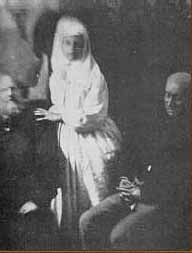 Although
The Bridge of Dead Things
is clearly a work of fiction, it was suggested in part by the true tale of the respected Victorian scientist Sir William Crookes and his spirit-materialising protégée Florence Cook. This is the second of four posts relating her life story.
Although
The Bridge of Dead Things
is clearly a work of fiction, it was suggested in part by the true tale of the respected Victorian scientist Sir William Crookes and his spirit-materialising protégée Florence Cook. This is the second of four posts relating her life story.By the beginning of 1873 Florence was performing her own séances at the Cook family home in Dalston, but by now there were full materialisations. The audience, often comprised of highly respectable professional men and women, would sit in the dimly-lit parlour while Florence was bound by ropes. She then retired to an adjoining room screened off from view by a thin damask curtain. Presently the spirit of Katie King would appear dressed in white, and walk about the room telling the story of her former life as Annie Morgan, the buccaneer’s daughter. It was a charming tale. Annie had been twelve years old when Charles the First was beheaded; she’d married and had two little children; she’d committed more crimes than she cared to confess; she’d even murdered men with her own two hands; she’d died young. To questions concerning the reason of her reappearance back on earth, she claimed that it was part of the work she’d been entrusted with, to convince the world of the truth of Spiritualism.
In Spring of that year Florence Cook held a series of sittings designed to capture a photographic likeness of Katie. On the 7th of May, Mr W. H. Harrison, a reporter for the Daily Telegraph (who in later years went on to edit The Spiritualist, a London-based magazine dedicated to examining spiritualist phenomena from a scientific perspective), successfully managed to take the first four photographs of Katie. Florence also sat for the highly respected scientist William Crookes, who took a total of forty-four photos of Katie at his home in Regent’s Park, all the while performing tests on Florence as part of his on-going investigation into spiritualist mediums.
Florence was fast becoming famous, but fame breeds jealousy. At a séance held on the 9th of December 1873 the lawyer William Volckmann seized Katie King by the waist and refused to let go. Some of those present claimed that the spirit “glided” out of Volckmann’s grip; others suggest that she defended herself quite vigorously (Volckmann lost part of his beard). Edward Elgie Corner, a ship’s captain from Dalston who was a neighbour of the Cooks as well as being a close family friend, together with another of her supporters rushed to Katie’s aid. The gaslights were rapidly extinguished, there was a great deal of scuffling and by the time peace was eventually restored and the room re-lit, Katie King had vanished and Florence Cook was discovered still secured by her ropes. As Volckmann was most likely in league with Agnes Guppy (the formidable medium from Highbury who’d landed on the table in a state of semi-undress—whom he in fact married after her elderly husband passed away barely a year later), it would seem that Florence’s relationship with her erstwhile colleague had soured considerably.
Volckmann’s attack damaged her reputation. Unfortunately Crookes’s report, Notes of an Enquiry into the Phenomena called Spiritual during the Years 1870-1873, published a month later in the Quarterly Journal of Science (January 1874) did little to restore it, despite his vehement assertion that Florence Cook, the American Kate Fox, and the Scotsman Daniel Dunglas Home, were all genuine mediums producing perfectly genuine results.
Next time: Katie King bids the world farewell (for the second time, presumably).
Find out more at michaelgallagherwrites.com
Published on May 07, 2013 04:23
•
Tags:
mediums, seance, spiritualism, victorian-mediums, victorian-seances
April 29, 2013
The rise and fall of Victorian medium Florence Cook: what Katie brought to the table
 Although
The Bridge of Dead Things
is clearly a work of fiction, it was suggested in part by the true tale of the respected Victorian scientist Sir William Crookes and his spirit-materialising protégée Florence Cook. This is the first of four posts relating her life story.
Although
The Bridge of Dead Things
is clearly a work of fiction, it was suggested in part by the true tale of the respected Victorian scientist Sir William Crookes and his spirit-materialising protégée Florence Cook. This is the first of four posts relating her life story.Florence Eliza Cook was born on June 3rd 1856 in Cobham, Kent to parents Henry and Emma Cook, who moved to London when she was three and took up residence at 6 Bruce Villas, Eleanor Road, Dalston. She was the eldest of four children.
In 1870, at the age of fourteen, she began table-rapping experiments with her friends and family, surprising everyone when a violent burst of poltergeist activity ensued. A spirit responding to her questions through a system of yes-or-no raps informed her that she was indeed a medium and then directed her to the local Spiritualist Association. By the following year she’d started working for a pair of established mediums, Frank Herne and Charles Williams, and reports of her séances were beginning to crop up in the spiritualist press. Herne’s spirit-guide was an entity named John King, who rather confusingly claimed to be the ghost of Sir Henry Morgan, the famous buccaneering pirate. Florence Cook’s guide was Katie King, John’s daughter, who also claimed to be Annie Owens Morgan, the daughter of the pirate. At this point there was none of the bodily manifestations of Katie that came later; there were simply disembodied voices, messages written by unseen hands, and phenomena known as “apports”—objects that appeared to fall from the ceiling.
There is a truly fascinating story of one such occurrence: early in the June of 1871 Herne and Williams were conducting a séance together for eight sitters around a table at 69 Lamb’s Conduit Street when the voices of Katie King and her father were heard in the darkness. Katie offered to produce a gift for the group and one of the sitters suggested—half jokingly—that she bring them Agnes Guppy, an extremely stout medium famed for her own apports who lived some miles away in Highbury. Katie laughed—everybody laughed—and though her father protested she agreed to go through with it. Suddenly there was a loud thump; somebody screamed. When one of the company had the presence of mind to light a lamp, there on the table in front of them, apparently in some kind of trance, was perched the stout Mrs Guppy in a state of semi-undress, account book and pen still in hand. Now that’s what I call entertainment!
Next time: Katie finally makes an appearance but nearly falls victim to a ghost-grabber.
Find out more at michaelgallagherwrites.com
Published on April 29, 2013 06:19
•
Tags:
florence-cook, katie-king, mediums, seances, spiritualism, victorian-mediums, victorian-seances
April 18, 2013
Relationships are never easy: the problem with Egyptian mummies
 I’ve had to learn masses of new things over the past few weeks and it’s been gruelling. The most interesting of these by far (though my head was aching for days while I struggled to make sense of it) was trying to interpret and compare DNA results from a selection of mummies found in or near the Valley of the Kings to see if and how they were related. Why was I doing this? Because the next book in the series, The Scarab Heart, is set in the Valley of the Kings and I wanted to check the findings out for myself.
I’ve had to learn masses of new things over the past few weeks and it’s been gruelling. The most interesting of these by far (though my head was aching for days while I struggled to make sense of it) was trying to interpret and compare DNA results from a selection of mummies found in or near the Valley of the Kings to see if and how they were related. Why was I doing this? Because the next book in the series, The Scarab Heart, is set in the Valley of the Kings and I wanted to check the findings out for myself.There were times when I despaired of ever understanding how it worked. All you are presented with are sets of paired numbers. These, for example, are the findings for one particular mummy (lets call him Mummy 1), though eleven mummies in total were tested:
Locus D13S317: alleles 10, 12
Locus D7S820: alleles 10 , 15
Locus D2S1338: alleles 16, 26
Locus D21S11: alleles 29, 34
Locus D16S539: alleles 8 , 13
Locus D18S51: alleles 19 , 19
Each of the loci mentioned is a very specific section of the genome. The paired numbers (alleles) found at each represent particular characteristics inherited either from the subject’s mother or father, or from both (one allele from each). Is your head aching yet? My breakthrough came when I realised it was simply a numbers game. Here are the results for the person believed to be Mummy 1’s father (Mummy 2):
Locus D13S317: alleles 10, 12
Locus D7S820: alleles 15, 15
Locus D2S1338: alleles 16, 26
Locus D21S11: alleles 29, 34
Locus D16S539: alleles 11, 13
Locus D18S51: alleles 16, 19
Similar, aren’t they? Notice that I’ve marked some of the numbers in Mummy 1’s results. These alleles are not present in Mummy 2, so they must have come from Mummy 1’s mother.
It sounds a little simpler now, doesn’t it? Unless of course Mummy 2 is not in fact Mummy 1’s father, but his brother or half-brother instead.
P.S. Can anybody guess the identity of Mummy 1?
Published on April 18, 2013 06:31
•
Tags:
ancient-egypt, dna, egyptian-mummies, tutankhamen, tutankhamun, valley-of-the-kings
April 11, 2013
Technology is a stalker
11 April 2013
The last two weeks have proved interesting to say the least. I’m not a technophobe as I don’t hate technology, but I have generally tried to avoid it. My digital footprint used to be minuscule. Not any more. Two weeks ago my website went up, then The Bridge of Dead Things was published as an e-book, and now I have this wonderful author page on Goodreads, this on-line community which I am rapidly beginning to cherish.
Technology is a stalker. A year ago I had no idea what html was; when I first saw it, it looked like mindless gobbledegook. I now prefer to edit in html over Word. Two months ago I would have hazarded a guess that an SEO was a Senior Executive Officer; now I write for my website with the sound of search-engine spiders scurrying through my mind. I can google myself and find me there. The only difficulty (or is it my one salvation?) is that I don’t yet have the internet at home. I wonder how long this unusual situation will be allowed to last?
The last two weeks have proved interesting to say the least. I’m not a technophobe as I don’t hate technology, but I have generally tried to avoid it. My digital footprint used to be minuscule. Not any more. Two weeks ago my website went up, then The Bridge of Dead Things was published as an e-book, and now I have this wonderful author page on Goodreads, this on-line community which I am rapidly beginning to cherish.
Technology is a stalker. A year ago I had no idea what html was; when I first saw it, it looked like mindless gobbledegook. I now prefer to edit in html over Word. Two months ago I would have hazarded a guess that an SEO was a Senior Executive Officer; now I write for my website with the sound of search-engine spiders scurrying through my mind. I can google myself and find me there. The only difficulty (or is it my one salvation?) is that I don’t yet have the internet at home. I wonder how long this unusual situation will be allowed to last?
Published on April 11, 2013 06:28



